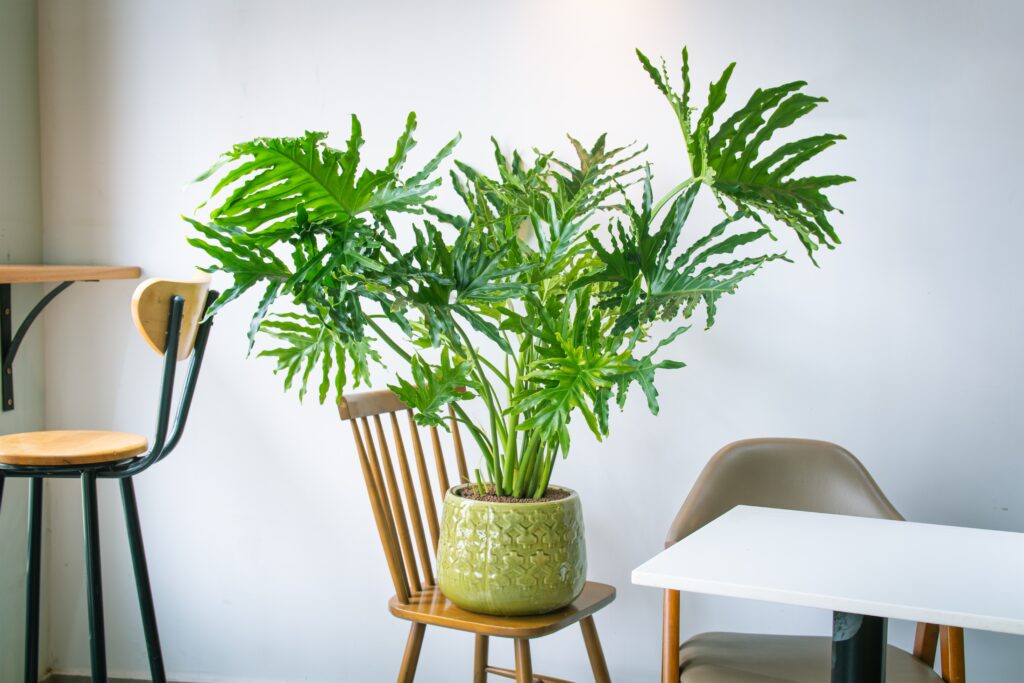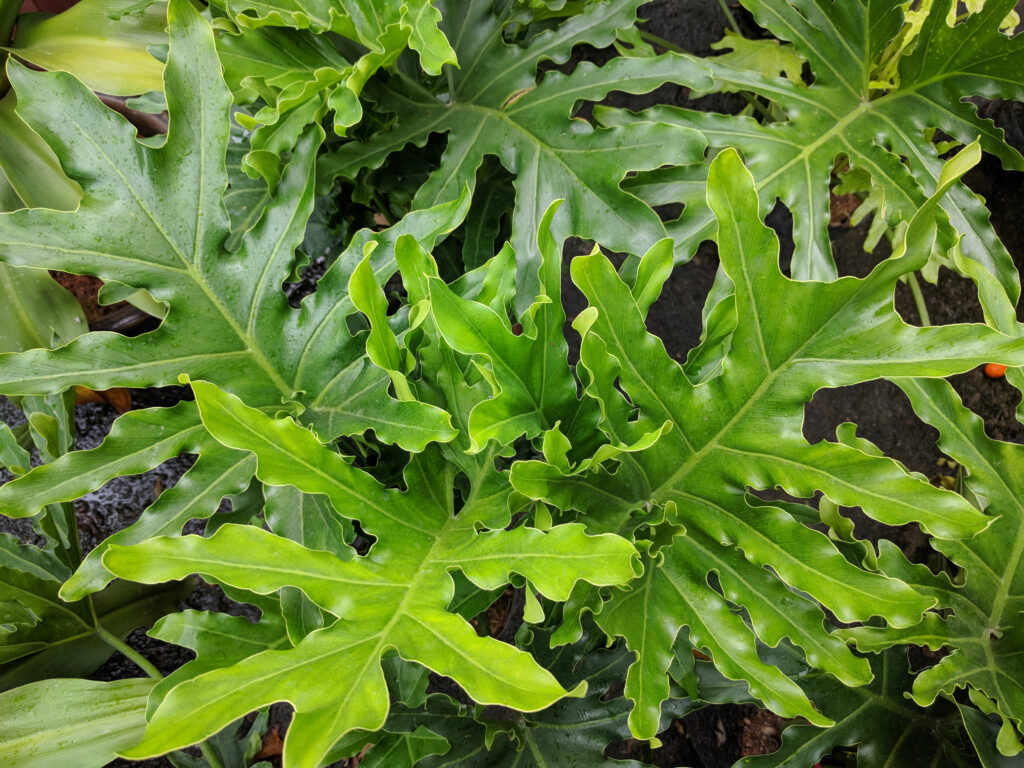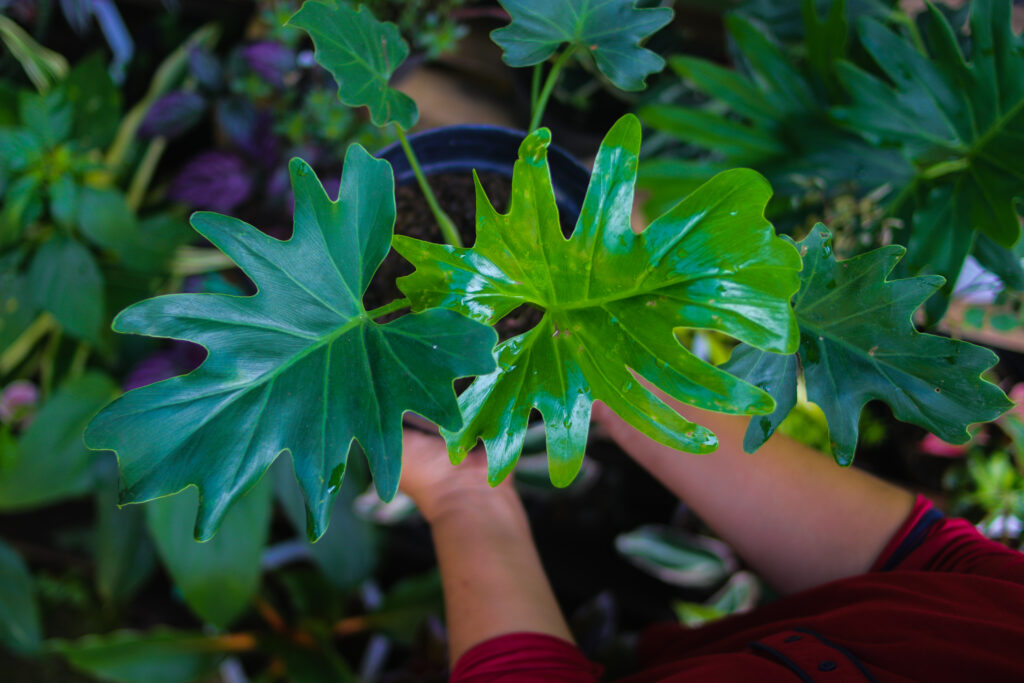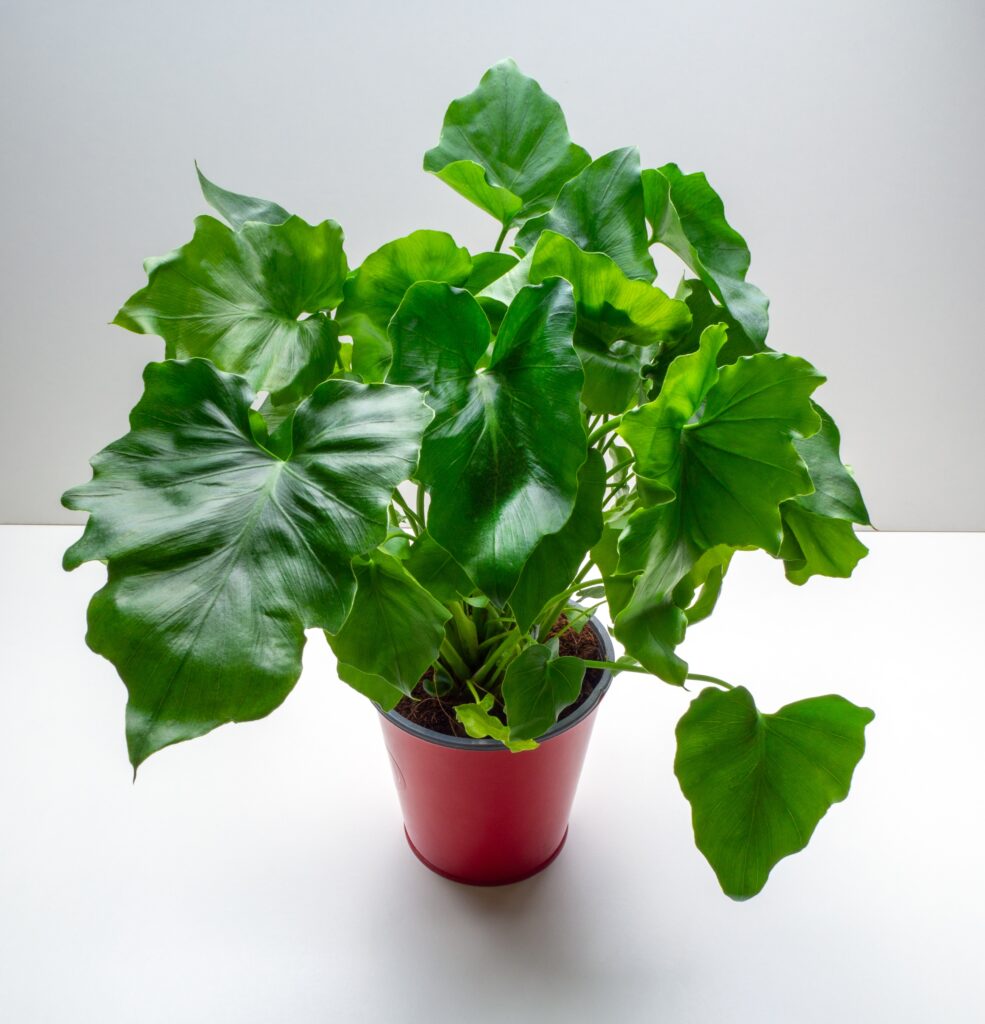Philodendron Selloum Care Guide: 9 Tips for a Healthy Plant
Easy growing, large-leaved, and beautiful, the Philodendron selloum plant makes for a stunning houseplant. These beautiful leafy plants spring flowers and fruits, all in green, with long, gorgeous leaves as the showiest part of the plant.
If you’d like to bring one home and care for it, you’ll need a few tips to care for the plant. Here are those tips.
Overview of Philodendron selloum

©Mid Tran Designer/Shutterstock.com
The Philodendron selloum goes by a few names, including:
- selloum
- Philodendron selloum Hope
- Philodendron bipinnatifidum Hope
- Thaumatophyllum bipinnatifidum
- Split-leaf philodendron
- lacy tree philodendron
- horsehead
The plant belongs to the Araceae family, a shrub that grows year-round as an evergreen. The plant survives in USDA Hardiness Zones 8B through 11.
Description of Phillodendron selloum
These beautiful Philodendron plants generally reach heights between 6 and 12 feet, with a spread of 10 to 15 feet. The plant habitually grows round, with moderate density at a fast growing rate. The evergreen plant comes in shades of green. They don’t show any color changes in autumn. Periodically, they grow green flowers with a sweet, pleasant fragrance. Their fruit has a fleshy, green texture and appearance, inconspicuously tucked away into the plant.
Provide Your Philodendron selloum with its Proper Lighting Needs
The gorgeous Philodendron selloum Thrives in partial shade or partial sun. Naturally, they find flickering, dappled, natural light in their native environment, with indirect light beaming down through the canopy of trees above. That means, when you plant this gorgeous leafy outdoors, it should be sheltered partially by shade structures. This could mean trees or taller shrubs or you can create your own.
If growing them indoors, Philodendron selloum should be kept near windows where they won’t receive direct light. Ideally, this means west- or south-facing windows. You can also use grow lights over them, with filtered settings or taller plants, to light them properly.
The gorgeous, long stems of your Philodendron selloum Hope look for the light, bending towards it for health reasons. For best results, rotate your plant frequently to maintain the shape as desired. Otherwise, you may wind up with a leaning plant!
If you notice discolored stems or leaves, you could be over-watering the plant, or they may be receiving too much direct light.
Take Care of Its Watering Needs

©sharohyip/Shutterstock.com
Philodendron selloum are fairly drought tolerate (rated moderate), but they do need proper watering.
The size of the plant and its pot will both impact how often the plant needs watered, as well as the type of soil it’s grown in. Small pots with drainage holes require more frequent watering. Large pots with no or few draining holes require more watering. Well-draining potting mix requires more frequent water as well.
Generally speaking, you can water your Philodendron about once a week from spring through autumn. In winter, it will be needed more like every 10 to 14 days.
Check the soil regularly, though, to ensure it’s not dryer than expected. When the top 1 to 2 inches of soil is dry, water the plant. Keep the plant moist all year round.
Deal with the Temperature and Humidity Needs of Your Philodendron selloum
Philodendrons of all varieties thrive in humid, warm environments. This means some do well in bathrooms, if they have enough light. Place them in rooms with temperatures between 65 and 80 degrees Fahrenheit, ideally towards the higher end.
Avoid placing them near heating or air conditioning vents to prevent them from drying out. To add humidity, place the pot on a tray filled with water. Set the pot on top of pebbles resting the water. Spray the plants often (stems and leaves) to help keep them humid, as well.
Prep for the Soil Needs for Philodendron selloum
Philodendron selloum does not do well with salty soil, so is not good for outdoor plantings in coastal areas. Otherwise, the plant prefers slightly alkaline soil, clay, sand, loamy, or even a little acidic soil. In other words, the plant isn’t super picky on its soil.
The plant does require a well-draining potting mix with organic matter and should be kept moist without being wet. If so desired, make your own with one part potting soil, one part perlite, and one part peat moss.
Carefully Place Your Philodendron selloum

©jamaludinyusuppp/Shutterstock.com
Placement for your plants is always important, as it can affect their lifespan and healthiness.
- With Philodendron selloum, you’ll want to plant them 36 to 60 inches apart when planting them outdoors or in a shared large planter box.
- Plant them where they will get dappled shade and never full sun. They require medium to bright indirect light. The plants aren’t naturally adept to bright, direct light.
- For vertical plantings, stake them for upright growth.
Take Care Pruning Your Philodendron selloum
Mainly, the Philodendron selloum only requires pruning to maintain its shape and size. The plants may reach up to 5 feet in height, so most folks keeping them indoors seek to maintain them at a smaller size.
To prune them, use clean, sharp shears to cut at the base of the stem. Remove any infected, yellowed, or otherwise damaged leaves.
Provide Proper Fertilization for Philodendron selloum
Use either a liquid or slow-release fertilizer for your Philodendron selloum about once a month. During the winter, cut back to no fertilizer to prevent root damage. Be sure not to fertilize it more often that this, as it will likely damage the plant and result in brown leaves.
Known When to Re-pot Your Philodendron selloum

©Elzloy/Shutterstock.com
As your Philodendron grows, it will outgrow the pot. That means, eventually you’ll need to move it to a larger pot. The alternative is to maintain it smaller in the same pot. However, you’ll still need to repot the plant every couple of years to continually provide the necessary nutrients in the soil the plant requires.
Every two to three years, or when the plant outgrows its pot, provide the plant with a new pot one or two sizes larger than the current one. Don’t go overboard on the size, though! You don’t want to wind up over-watering the plant.
Use fresh potting mix that’s properly moist before the repotting occurs. Then, clean the old soil gently from the roots and place in the new pot. Fertilize immediately and watch it grow!
Learn Proper Propagation for Philodendron selloum
Either stem cuttings or division may be used to propagate Philodendron selloum. Stem cuttings are the easiest, so most folks opt for this choice, especially as the plants wind up with fewer health issues done this way than through division.
- Cut off a stem with two to three leaves, just below the node.
- Place the stem in purified water, node end down.
- Keep the water levels high and watch the stem over time.
- Change out the water regularly for clean, purified water.
- Within three or so weeks, you’ll see roots sprout. When the roots hit at least 2 inches in length, remove the stem from the water.
- Plant the stem, roots down, into a fresh potting mix blend.
Is Philodendron selloum Safe for Pets?
These beautiful tropical plants is, unfortunately, toxic for both dogs and cats. This means they need to be planted where pets can’t easily get to them. The toxicity ranges from mild to moderate, resulting in digestive issues or worse. If you notice chew marks on the plants, call your vet for care instructions right away.









